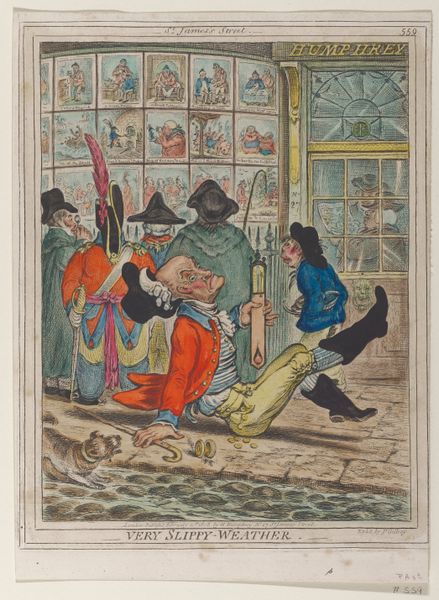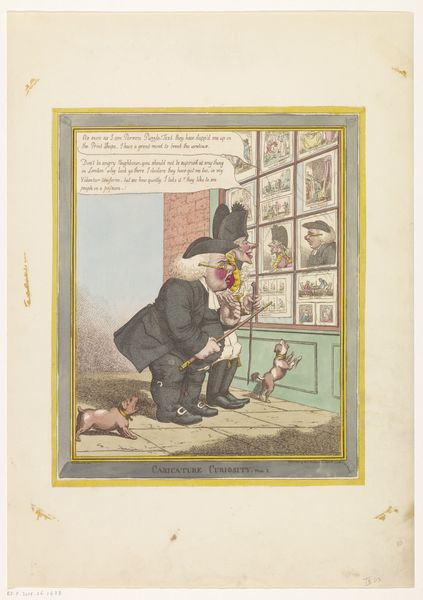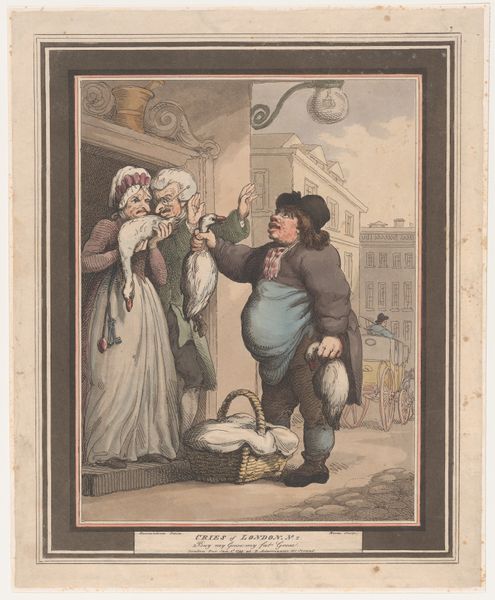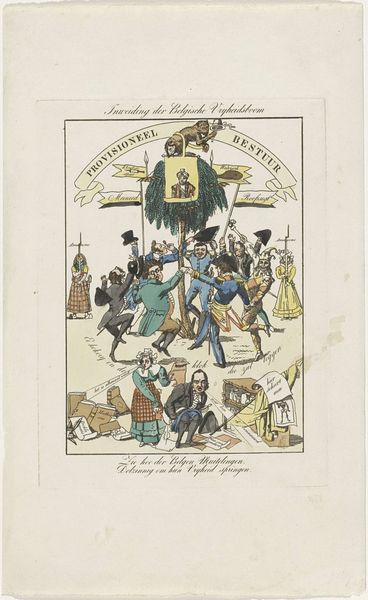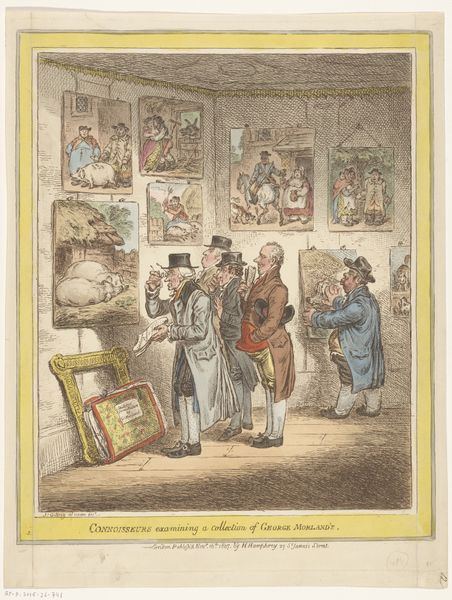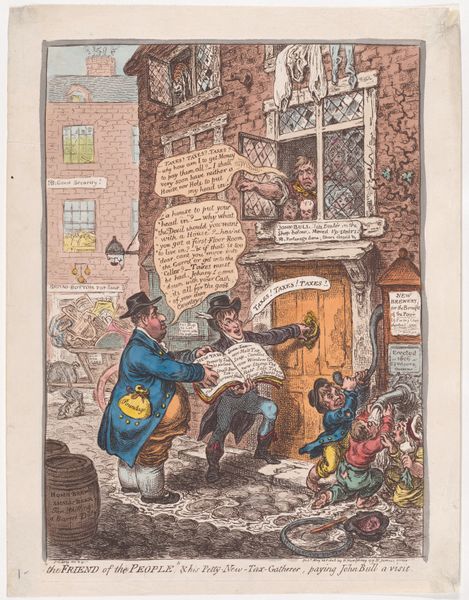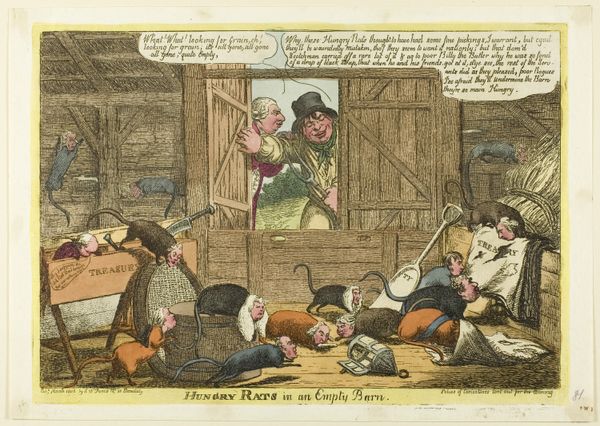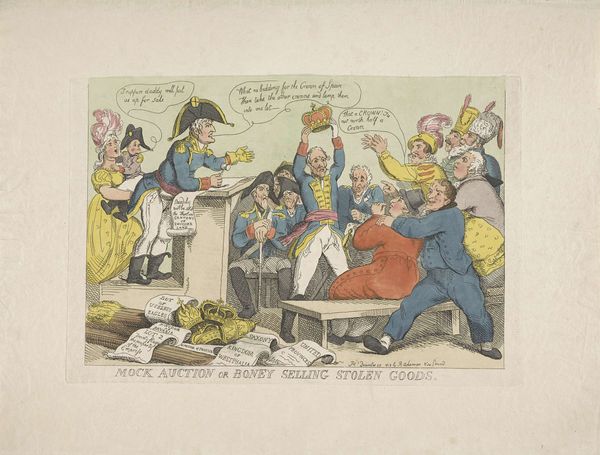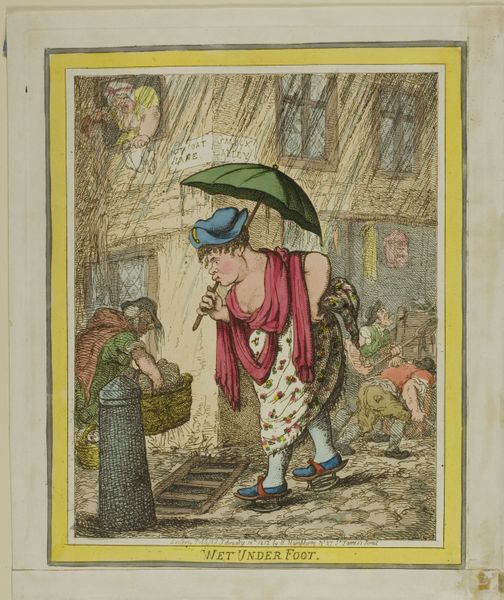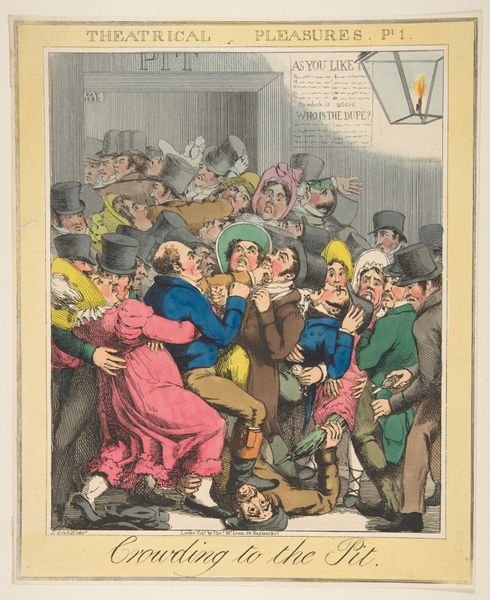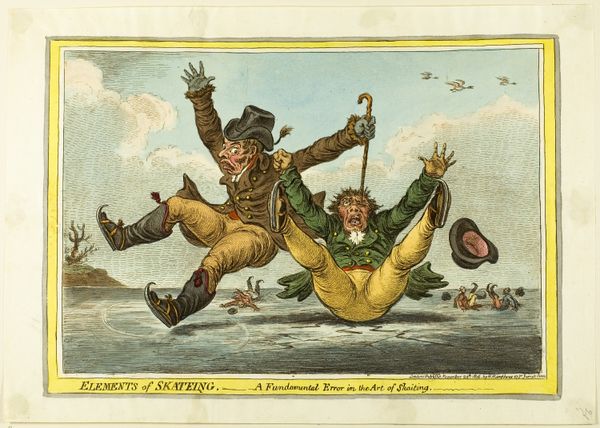
drawing, print, etching, paper
#
drawing
#
bold yellow colours
#
aged paper
#
toned paper
#
yellowing background
# print
#
etching
#
traditional media
#
caricature
#
paper
#
brown and beige
#
england
#
yellow element
#
yellow accent
#
cartoon carciture
Dimensions: 252 × 195 mm (image); 260 × 205 mm (plate); 283 × 235 mm (sheet)
Copyright: Public Domain
Curator: James Gillray's print, "Very Slippery Weather," likely created around 1808, captures a humorous, perhaps even cautionary scene, doesn't it? Editor: Oh, absolutely! It strikes me immediately as an indictment of social folly. The off-kilter perspective and the central figure splayed on the ground...it’s comedic gold, though tinged with a biting commentary, perhaps on the excesses of the wealthy? Curator: Indeed. Gillray was a master of caricature. Note how he uses symbols - the fallen man clutching what looks like a barometer, the scattered coins, the expressions on the faces of the onlookers – each a small story within the larger narrative. He seems to be pointing to a fall from grace, both literal and perhaps metaphorical. Editor: Yes, the barometer seems to mock the fallen man's misplaced faith in instruments of reason. He trusted in science, perhaps even progress, but slipped anyway, the so-called civilized man rendered ridiculous by nature. Curator: And observe the setting – it’s clearly a street in London, judging by the window display in the background. Gillray, with his keen eye, documents not just a single event but a moment within a specific culture. I wonder, what might the symbols and visual cues reveal about the era’s social anxieties and prevailing values? Editor: I would add that the figures looking at the window could signify how images affect our views on the world. It creates some kind of hyperreality effect, reflecting back onto this gentleman in his predicament. This is all an example of an intersection of the societal and environmental factors and the economic, resulting in individual suffering. What about this makes you think of continuity through visuals? Curator: For me, there's a continuous thread that links past social hierarchies to contemporary struggles and societal critique. His images highlight our own human absurdities reflected in time. Editor: Perhaps... it makes one question which voices are being caricatured even now. The print, although aged, still serves as a reflection of how socioeconomic status and lack of attention can affect social class. Curator: It does indeed. Gillray's legacy resonates powerfully even today, urging us to reflect upon the symbols and behaviors we project and ingest and perpetuate. Editor: Very well said. His insight to social hierarchy rings true, as a lasting effect from generations back then to our current place in time.
Comments
No comments
Be the first to comment and join the conversation on the ultimate creative platform.
